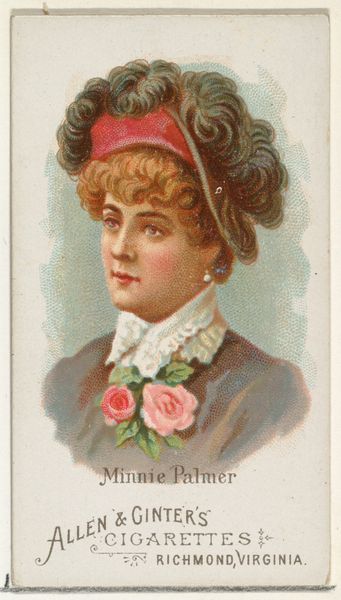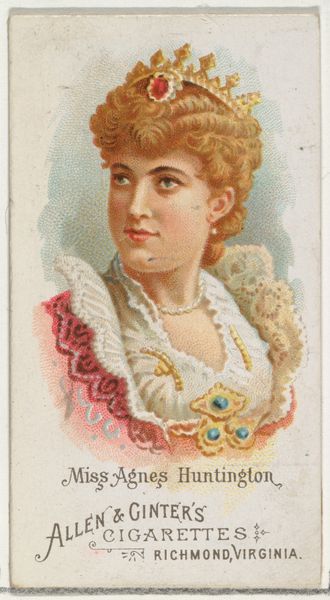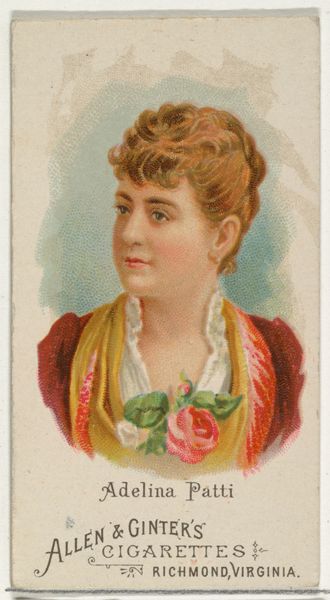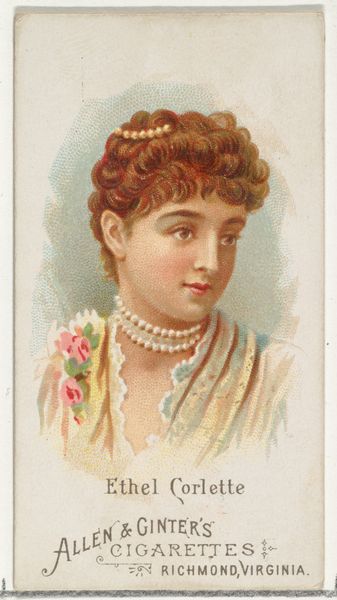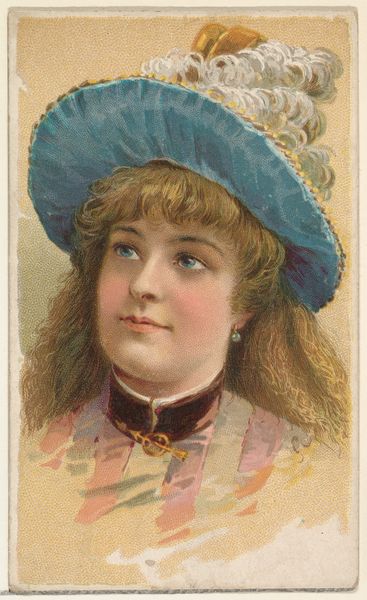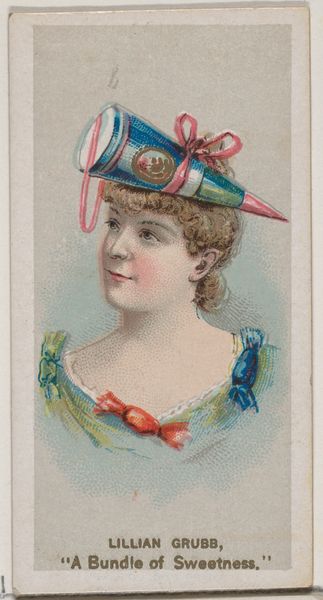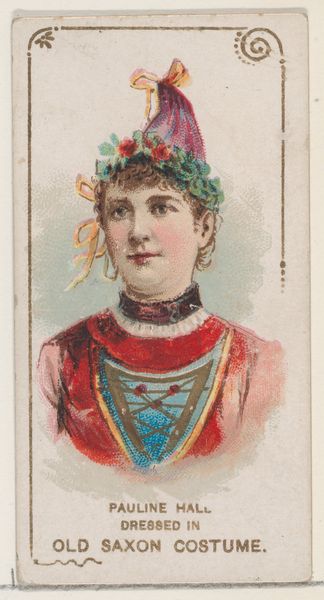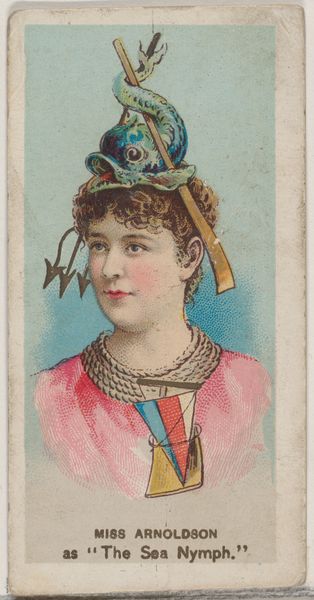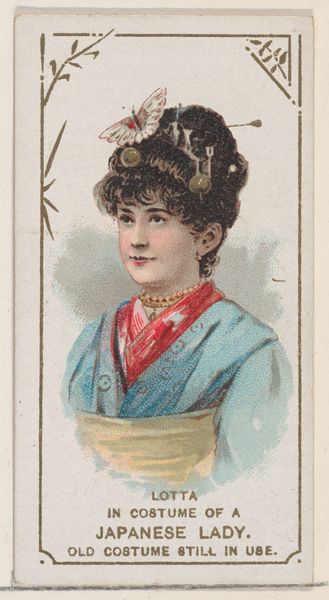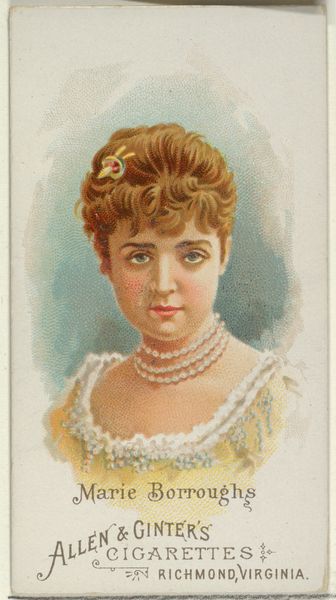
Estelle Clayton, from World's Beauties, Series 1 (N26) for Allen & Ginter Cigarettes 1888
0:00
0:00
#
portrait
# print
#
coloured pencil
#
portrait art
Dimensions: Sheet: 2 3/4 x 1 1/2 in. (7 x 3.8 cm)
Copyright: Public Domain
Curator: Here we have a portrait of Estelle Clayton, dating back to 1888. It's from a series called "World's Beauties," part of Allen & Ginter's Cigarette Cards. It combines drawing and printing, employing coloured pencils to achieve this vibrant image. Editor: It has a real lightness to it, despite the somewhat fussy detail of her hat and lace. Almost ethereal, like a porcelain doll. The palette feels soft and gentle. Curator: Those cards were inserted into cigarette packs, part of a marketing strategy that intersected art and consumerism in fascinating ways. Notice how it utilizes the aesthetic characteristics associated with Japonisme, demonstrating how artistic trends were co-opted by commercial entities of the era. The material production of these cards, down to the coloured inks used in the printing process, speak to emerging industries and mass-production capabilities. Editor: Absolutely. I wonder what role these "beauty" portraits played in shaping the ideal image of women at the time. Beyond aesthetics, what did it mean to link feminine beauty to a product like cigarettes? Was this empowering, restrictive, or just a calculated move in the market wars over the consumers? Curator: Precisely! These images certainly contributed to shaping beauty standards. Consider also the economics: the tobacco industry used the creation and distribution of art – mass produced though it may be – to further cement its power. Cigarette cards like this blurred the line between art, advertising, and social messaging. Editor: It highlights how capitalist forces can readily adopt, adapt, and circulate artistic elements to build both social imagery and very real capital, while employing artists and labourers to create the physical materials to begin with. Curator: Yes, it prompts us to question not just the image itself, but the means and intentions behind its creation and distribution, as well as its impact. Editor: Thinking about the labour involved really shifts my perception. It becomes more than just a pretty portrait, doesn't it? Curator: Indeed, and this card invites reflection on beauty, industry, and the interplay between art and societal forces, and helps us question it all.
Comments
No comments
Be the first to comment and join the conversation on the ultimate creative platform.
